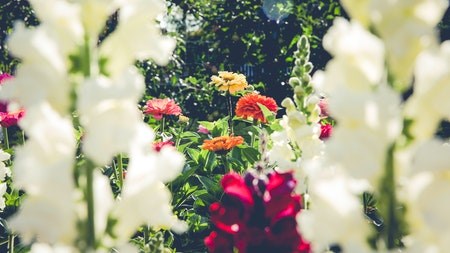Using a pretty pot is essential when planting for indoors.
Some years ago there was a memorable advert that referred to a particular make of car as “caged but not tamed”. The same could be said for indoor plants because most plants that are used indoors originally come out of the forest.
The distinction between indoor and outdoor plants is a man-made one, says Julian Kruger of BallStraathof. “All plants grow best outdoors but some have become known as indoor plants because they can survive with less light, infrequent watering and neglect, in many cases,” he says.
Create the right micro-climate
“If you know what the plant’s outdoor needs are and you are able to recreate that microclimate indoors, you can grow almost anything indoors, for a limited period of time,” he says. “The problem is that our houses are draughty, there are heaters, fats and oils, no humidity, and fluctuations in temperature and, if we want the plants to survive under these conditions we have to select the right plants for the right position, create a suitable environment and put effort into caring for the plants.”
The way we use plants indoors changes as fast as other gardening fashions but one thing remains constant; a healthy, green and flowering plant instantly adds life to a room – especially in winter.
Plants for indoors
Two of the loveliest winter flowering plants that grow well indoors are Primula acaulis and Cyclamen. Both should be placed in areas that are well lit but do not receive full sun.
The new Primula acaulis ‘Tundra’ is a very dwarf, compact plant that produces a posy of flowers above the lime green leaves. The range of brilliant colours includes solid colours as well as bi-colours with yellow centres and some also have different colour edgings.
Cyclamens come in a range of pink shades and their butterfly- like blooms are carried above the deep green heart shaped leaves that are often marked with silver lines.
Pansies and violas are at their best in outside pots but they can be brought inside as soon as they come into flower. If given a warm sunny place, they should flower through winter. If the flowers go off, take them outside, give them a good feed with liquid fertiliser and let them come back into another flush before bringing them back inside.
Make the most of winter sun
Rooms that receive mild winter morning sun can also play host to a number of tender flowering plants that are normally associated with summer. They can be taken outside when the temperatures rise and the danger of frost is over.
Two particularly attractive pot plants for an enclosed patio are the Begonia Dragon Wings and Begonia “Illumination”. The Dragon Wings is a substantial plant with glossy green angel-wing leaves and huge scarlet or clear pink blooms that are slightly pendulous.
If your Coleus survives the winter, take it inside and pamper it in a warm area that receives good strong light. It may be difficult to find Coleus Kong plants but keep it in mind for next winter. Coleus Kong is a new variety with larger than normal leaves, and interesting colour combinations.
The New Guinea Impatiens Celebrette and Fanfare are popular summer patio plants that like cool, shady conditions. In winter, move them into an area that receives morning sun and they will keep flowering throughout the cold months. The New Guineas come in a multitude of colours, the blooms are big and some varieties have multicoloured leaves as well that are just as attractive.
The same applies to other impatiens varieties and one variety to keep in mind is the Impatiens Fusion, which i s South Africa’s first yellow and peach impatiens with open-faced, orchid-like blooms. Also colourful is the Calceolaria that produces lots of pouch-shaped flowers, usually spotted. The flower colours are very bright and it is a low, compact grower.
One super-sized pot plant can make a statement in a previously empty corner.
Indoor plant-care tips
Here some tips on how to grow and care for indoor plants during winter.
Over watering, rather than under watering, is usually the biggest killer.
Pots should never stand in water, except for African violets.
Potting soil should drain well so that the water runs through when the pot is watered.
A plant growing indoors generally needs less water than its counterpart in the garden.
Generally the plants need a good watering once a week but plants in smaller pots (12 to 20 centimetres) may need to be watered two or three times a week.
Allow some ventilation for plants receiving direct or morning sunlight as the heat can build up in a closed room.
Make sure that ventilation does not result in cold draughts, as this is not good for the plants.
Keep plants away from heaters.
Fats from the kitchen tend to settle on the leaves of plants, which then attract a layer of dust, effectively suffocating the plants.
Smaller plants should be taken outside once a week and hosed down. The leaves of larger plants can be wiped or cleaned with a mist spray.
Feed every two weeks with a liquid fertiliser like Margaret Roberts Organic Supercharger or Nitrosol, at half strength.
Watch out for pests like woolly aphid or scale, which may survive in warmer indoor temperatures, and spray with an organic insecticide.
Remove dead flowers to encourage the plants to flower more.
Written by Alice Spenser-Higgs and published with permission from Home Front, June 2006



